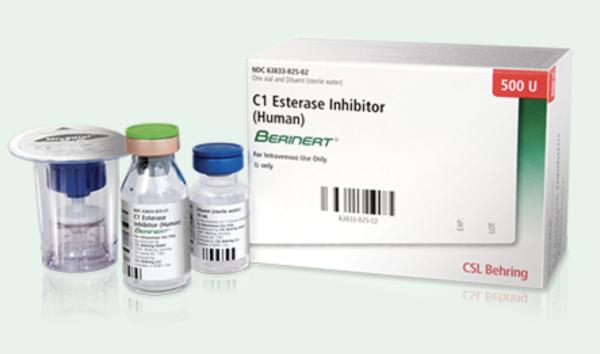C1 Esterase Inhibitor (Human) Dosage
Medically reviewed by Drugs.com. Last updated on Nov 18, 2024.
Applies to the following strengths: 500 units; 500 intl units; 2000 intl units; 3000 intl units
Usual Adult Dose for:
Usual Pediatric Dose for:
Additional dosage information:
Usual Adult Dose for Hereditary Angioedema
For routine prophylaxis against angioedema attacks in HAE patients.
Cinryze: 1,000 Units by intravenous infusion at a rate of 1 mL per minute (1,000 units/ 10 mL) every 3 or 4 days.
For treatment of acute abdominal, facial or laryngeal attacks of HAE:
Berinert: 20 units per kg body weight intravenously at a rate of approximately 4 mL per minute (500 units/10 mL).
Usual Pediatric Dose for Hereditary Angioedema
For treatment of acute abdominal, facial or laryngeal attacks of HAE:
13 years and older:
Berinert: 20 units per kg body weight intravenously at a rate of approximately 4 mL per minute (500 units/10 mL)
Renal Dose Adjustments
Data not available
Liver Dose Adjustments
Data not available
Dialysis
Data not available
Frequently asked questions
- What is Cinryze used for and how does it work?
- What is Ruconest used for and how does it work?
- How is Berinert administered?
- How does Berinert work for Hereditary Angioedema (HAE)?
More about C1 esterase inhibitor (human)
- Check interactions
- Compare alternatives
- Reviews (7)
- Side effects
- During pregnancy
- Drug class: hereditary angioedema agents
- Breastfeeding
- En español
Patient resources
- Complement C1 esterase inhibitor drug information
- C1 esterase inhibitor recombinant (Advanced Reading)
- C1 esterase inhibitor, human (Advanced Reading)
Other brands
Professional resources
Other brands
Related treatment guides
See also:
Further information
Always consult your healthcare provider to ensure the information displayed on this page applies to your personal circumstances.


